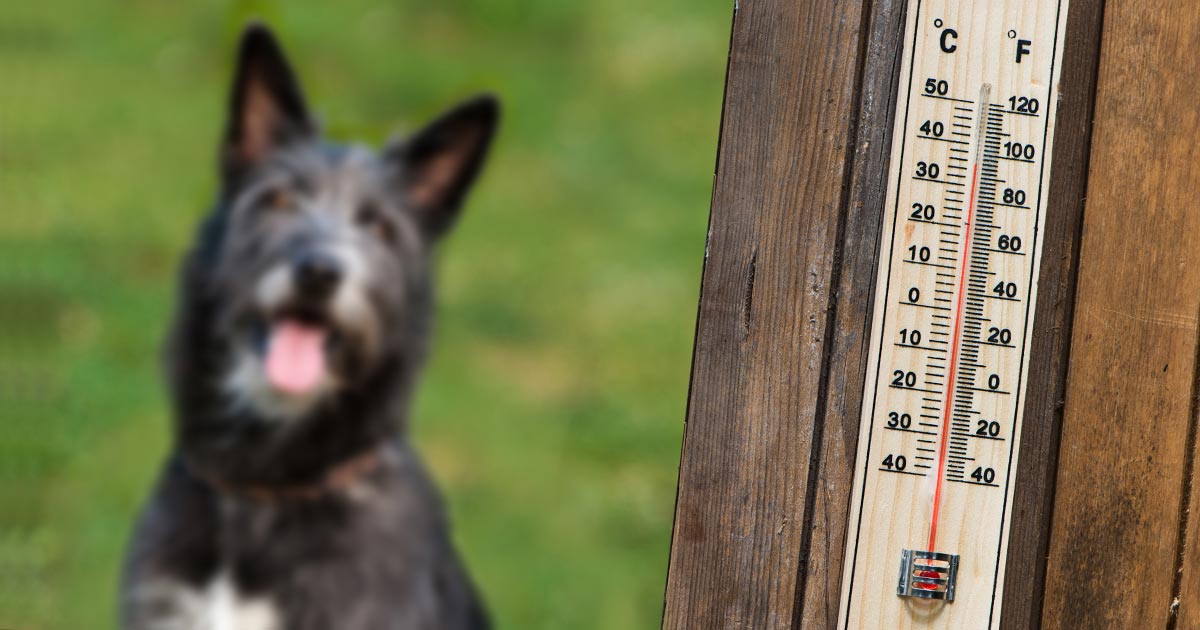The English summer, though tardy as usual, has finally arrived – and while this is cause for celebration among humans, I thought it best to share a few words of caution about keeping our furry friends equally happy as the temperatures rise.
Around this time of year, vets get a surge of patients coming in with signs of heat stroke, sunburn and dehydration – conditions that can often be prevented with just a few changes to routine and a little extra care.
Unfortunately, dogs can’t sweat through their skin as we can, and rely predominantly on panting, drinking and radiating heat via their noses and paw pads to keep them cool. For this reason, a number of factors should be considered when it comes to making sure your pet is comfortable and healthy in the hotter months.
Heat hints
Looking for signs of panting and lethargy are good ways to tell if your pet is getting uncomfortable, but a good rule of thumb is: if it’s too hot for you in shorts and a T-shirt, it’s probably too hot for your dog in his permanent fluffy jumper.
Dogs’ paws burn very easily on hot days. Please share our five-second rule warning for the summer months pic.twitter.com/4R6YNg6jsD
— Blue Cross (@The_Blue_Cross) May 24, 2017
If your dog requires a muzzle, try to find one that allows it to drink and pant, to help it regulate its own temperature.
On days at the hotter end of the spectrum, it’s also a good idea to walk your dog during the cooler hours – such as in the morning or evening/late afternoon – rather than at midday when the pavements are hottest, as cement and gravel that is too hot can burn its foot pads.
Five second rule
Blue Cross recently posted about a “Hot Day 5 Second Rule” for judging whether it’s too hot to walk your dog. It advises to stand on the pavement barefoot and if it’s too hot for you to bear after five seconds then it’s also too hot for your dog’s feet.
It’s not just dogs, though – cats only sweat through their paws, so they, like dogs, will often choose shadier spots and/or sprawl themselves out over the coolest place in the house or garden they can find.
However, unlike dogs, cats only use panting as a last resort, so if you see your cat panting, it’s a definite indicator you need to help it cool down. If your cat prefers the indoors then by making sure your house is ventilated and cool, with lots of water in supply, it should be pretty self-sufficient, as cats often are.
If you have an outdoor cat, restricting its access to the garden on the hotter days of the year may seem cruel, but it is probably the best thing for it – especially if you’re intending on leaving the house, and won’t be around to let it in to drink and take shelter if it needs to.
Hot exotics
I haven’t seen a lot mentioned online about caring for your exotic pets in a heatwave, so I thought I’d briefly touch on it here. Of course, I’m not an expert, and if you wanted professional advice on how to properly care for your snake, lizard, bird and so on then asking your local vet is definitely the best course of action.
However, small factors exist that people tend not to think about, such as turning off the heat mats and/or lamps in your reptile cages, as they’re not always needed when the external temperature is suitably high. Making sure cages aren’t in direct sunlight, but also aren’t in a draught, can be a fine line, but is also imperative.
This goes for bird cages as well, and it can also help keep the cage cool to keep it lower to the ground (since heat rises) and, of course, provide plenty of water – both for drinking and bathing in certain bird species.
Subtle signs
We all want the best for our pets, and it can be easy to forget their needs are often different to ours in subtle, but important, ways. Knowing the signs of when your pet is happy and when it is not is the best way to help prevent issues such as heat stroke and lower the number of cases seen in practice.
And, as always, if you’re unsure what signs to look for, or what precautions to take at any time of year, don’t hesitate to make an appointment with your vet to get some helpful advice.

Leave a Reply